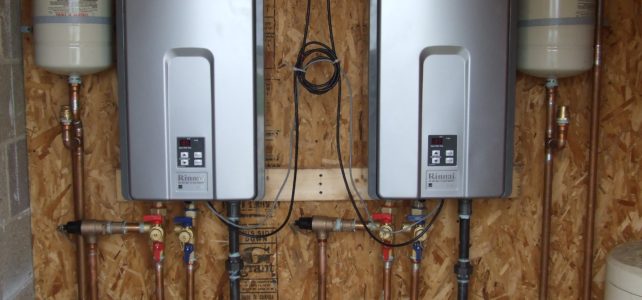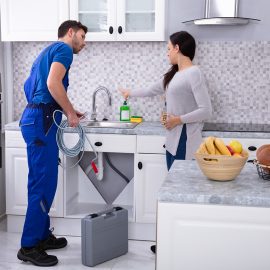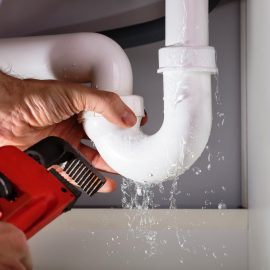
Installing a new water heater in Miami can seem like a daunting task, but with the right approach, it becomes manageable and even straightforward. Whether you’re replacing an old unit or setting one up for the first time, understanding the process can save you time, money, and potential headaches. Here’s a guide to help you navigate the essentials of water heater installation.
Why Install a New Water Heater?
Improving Efficiency and Reducing Costs
Older water heaters can be inefficient, leading to higher energy bills. Installing a new, energy-efficient water heater can significantly reduce your monthly costs. Modern units use less energy to heat the same amount of water, benefiting both your wallet and the environment.
Ensuring a Reliable Hot Water Supply
A new water heater ensures a consistent supply of hot water. Over time, older units may struggle to meet the demands of your household, resulting in lukewarm showers or long waits for hot water. Upgrading to a new unit can eliminate these frustrations and provide reliable hot water when you need it.
Preparing for Installation
Assessing Your Needs
Before purchasing a new water heater, assess your household’s hot water needs. Consider the number of people in your home, the number of bathrooms, and your typical water usage. This information will help you choose the right size and type of water heater.
Choosing the Right Type of Water Heater
There are several types of water heaters available, including tankless, storage tank, and heat pump models. Each has its own benefits and drawbacks. Tankless water heaters, for example, provide endless hot water but may have higher upfront costs. Storage tank heaters are more affordable but take up more space. Research and select the type that best fits your needs and budget.
Steps to Install a Water Heater

Disconnecting the Old Unit
If you’re replacing an old water heater, the first step is to disconnect it. Turn off the power supply or gas line to the unit. Next, drain the water from the tank by attaching a hose to the drain valve and running it to a suitable drainage location. Finally, disconnect the water supply lines and remove the old unit.
Positioning the New Water Heater
Place the new water heater in the desired location. Ensure it’s level and has adequate clearance on all sides for ventilation and maintenance. If you’re installing a tankless unit, mount it securely on the wall according to the manufacturer’s instructions.
Connecting the Water Supply
Connect the cold and hot water supply lines to the new unit. Use flexible hoses or copper pipes, depending on your setup. Ensure all connections are tight and secure to prevent leaks. For tankless water heaters, also connect the necessary venting and gas lines if applicable.
Installing Pressure Relief Valve and Expansion Tank
For storage tank water heaters, install a pressure relief valve to prevent excessive pressure buildup. Additionally, consider installing an expansion tank to accommodate the thermal expansion of water as it heats up. These safety features are crucial for preventing potential damage to your plumbing system.
Testing the New Unit
Once all connections are made, turn on the water supply and fill the tank. Check for leaks and ensure everything is properly sealed. Turn on the power supply or gas line and follow the manufacturer’s instructions to ignite the unit. Allow the water heater to heat up and test the hot water at various faucets to ensure it’s functioning correctly.
When to Call a Professional
Complex Installations
While many homeowners can handle basic water heater installations, certain situations may require professional expertise. If you encounter complex plumbing or electrical work, it’s best to hire a professional plumber or electrician to ensure the job is done safely and correctly.
Ensuring Compliance with Local Codes
Professional installation ensures compliance with local building codes and safety regulations. This is particularly important for gas water heaters, as improper installation can lead to gas leaks or other hazards. A professional will have the knowledge and experience to navigate these requirements.
Keeping Your Water Heater in Top Condition
Regular Maintenance
Regular maintenance is crucial for extending the lifespan of your water heater. This includes flushing the tank annually to remove sediment buildup, inspecting the pressure relief valve, and checking for leaks. Regular maintenance can prevent costly repairs and ensure your unit operates efficiently.
Addressing Issues Promptly
If you notice any issues with your water heater, such as strange noises, inconsistent water temperature, or leaks, address them promptly. Ignoring problems can lead to more significant damage and expensive repairs. In some cases, it may be necessary to call a professional to diagnose and fix the issue.
A new water heater installation can greatly improve your home’s comfort and efficiency. By following these steps and considering professional assistance when needed, you can ensure a successful installation and enjoy reliable hot water for years to come.



